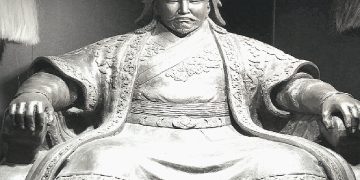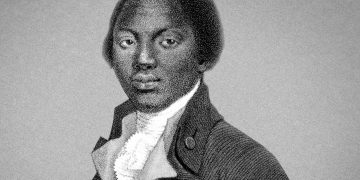The royal period is the oldest period in the history of Ancient Rome, in which there was an elective monarchy headed by the Roman kings. Traditional chronology is from 753 BC. e. (foundation of Rome) until the overthrow of the last king Tarquinius the Proud and the establishment of the Roman Republic in 509 BC. e. But it all started a little earlier, when the Etruscans were the hegemons of Italy.
Society and culture of the ancient Etruscans
Economy of Etruscan society. Position of cities
The most cultured, along with the Greeks, the people of Italy in the second quarter of the 1st millennium BC. e. there were Etruscans. Against the background of the Ligurs, Italics, Illyrians, who lived in a primitive communal system, the Etruscans stood out in that they had a class society and a state organization. The Etruscans settled in three areas –
- modern Tuscany – between the right bank of the Tiber and the Arno;
- north of it – Padan region,
- to the south – Campania.
The Etruscan economic power was based on fertile soils, which made it possible to collect rich crops of grain, flax and grapes, on the deposits of copper, tin and iron (on the island of Ilva), which stimulated the development of metal mining and metalworking, the manufacture of weapons, bronze mirrors, dishes and decorations, on the reserves stone and clay. On this basis, construction and ceramic production progressed.
Etruscan cities were located on heights, surrounded by powerful stone walls, built strictly according to the rules, then adapted to the Greek regular plan. An important part of the city were temples, similar in appearance to the Greek ones, but more squat. They differed in that they usually had three cellas, along the facade – a portico, framed by a colonnade, and a gable roof. The pediment was decorated with antefixes and acroteria in the form of figures of animals, birds or monsters – the Gorgon, typhon, and later – large terracotta statues of deities. Residential buildings were erected on a stone foundation and had wooden walls covered with clay cladding. The roofs were tiled, sometimes very intricate: the tiles were either painted or alternated – flat and semicircular. In pottery, the Etruscans imitated the Greeks, produced black-figure and red-figure ceramics, but they were famous for their originality. These were often black vessels decorated with reliefs or bizarre shapes in the form of animals, the so-called bukchero. Diversity and specialization in the production of agricultural and handicraft products contributed to the development of intra-Italian and maritime trade. Annual fairs were organized in the Feronia grove.
The abundance of wood and flax allowed the Etruscans to build ships and become wonderful sailors. The ramification of their foreign trade ties is evidenced by the rich grave goods. Etruscan necropolises are numerous and well studied. The tombs of the nobility carved into the rock have been preserved in the form of chamber tombs, over which round hills are poured. The walls of the cells are decorated with frescoes, sometimes with inscriptions. Archaeologists have found Egyptian vessels, ostrich eggs with images of sphinxes, products made of ivory, gold and silver of Syrian and Cypriot manufacture, Greek vessels, beads made of Baltic amber in the burial premises.
Social structure of Etruscan society
A fairly stratified society corresponded to a high degree of specialization of production and development of trade. The laborious work of land reclamation, the construction of cities and tombs involves the use of forced labor. Etruscan necropolises keep traces of ritual slave killings. Their presence is evidenced by images of prisoners with tied hands on an Etruscan vase, reports by ancient authors about a huge number of servants in wealthy houses, and also about the custom of forcing slaves to fight to the death during the funeral of the nobility. The archaic nature of Etruscan society allows us to speak of the patriarchal nature of slavery. But slaves were not the only exploited class. Ancient authors also mention another dependent stratum from among the impoverished Etruscans and the conquered population, Greek authors call them penetes. The Etruscans called the addicts “lete”, Lautney. The process of property and social stratification is indicated by the emigration of the impoverished people and their eviction to the colony. Usually such losers were grouped around leaders who were defeated in political struggle, or brave adventurers who sought their fortune in a foreign land.
In ancient legends, there is a certain Avkn, the son or brother of the founder of Perusia. Gathering a squad, he went north, to the Padan region, where he founded the city of Felzina (present-day Bologna).
The top of the Etruscan society was the military priestly nobility. Roman authors call its representatives princeps. Modern scholars believe that they were at the head of a privileged stratum (ethera). It could include noble warriors, as well as those close to the leaders from among the clients.
The Etruscan aristocracy retained paternal births. But the woman occupied an honorable place in the family. This was expressed in the fact that along with the name of the father, the Etruscans mentioned the name of the mother. From Etruscan clans are known –
- Tarquinia in the city of Tarquinia, who later ruled in Rome,
- Virkena – in Wolsinia and Veii,
- Pulens in Felsin,
- Tsilny in Arrezia, etc.
In addition to the nobility and people of dependent states, there were also ordinary free people in Etruria who were engaged in crafts and trade.
Political power in the cities first belonged to kings with military and religious powers. But in the VI century. BC e. the kings were replaced by elected officials. They were called differently – zilki, or zilakhi, corresponding to (Latin) praetor, purtna – dictator, marunukhi. In different cities there was a different set of these officials, their functions cannot be precisely determined.
The Etruscans did not form a single centralized state. Ancient authors report three twelve degrees (Tuscan, Padan, Campanian). These were fragile religious leagues, headed by zilakhs, or zilks, elected from the representatives of the cities, which also had military functions. There were practically more than twelve cities in the unions. This was primarily due to the fact that Etruscan centers were built far from the sea, but usually had their own port on the coast (for example, Pyrgi was the port of Tsere, Atriy and Spina – Felzin) and extended power to the rural area with small towns.
The best known is the composition and history of the Tuscan League. Its center was the city of Volsinia with the sanctuary of the deity, whose name or nickname was Vertumnus, or Veltumnus. The elections of the head of the union and annual festivities and fairs took place here. An important place was occupied by the cities of Veii, where the famous school of sculptors developed, Clusia, Perusia, Populonia in the seaside region, where iron ore was processed from about. Ilva, Tarquinia and Tsere. Each city had its own army of heavily armed infantry, the nobility made up detachments of horsemen, the leaders fought in chariots.
Fall of Etruscan hegemony
The need for new lands and markets, the aggravation of social contradictions caused colonization. Competing with the Italic Greeks in the Mediterranean trade, the Etruscans captured in the VI century. BC e. the east coast of Corsica and Sardinia, as well as the Campanian cities, where an alliance was organized led by Capua. If in the north the Etruscans peacefully shared with the Greeks domination of the Adriatic, then in Campania their rivalry led to sharp conflicts. The ally of the Etruscans against the Greeks was Carthage, claiming dominance in the Western Mediterranean. The forces of this union succeeded in 535 BC. e. defeat the Greeks at Alalia in Corsica, and the Etruscans extended their rule to this island.
The heyday of Etruscan cities and their commercial and military expansion in Italy and on the neighboring islands falls in the first half of the 6th century. BC e. But since the last quarter of the 6th century, the Greeks have prevailed over them. In 524 BC. e. they defeat the Etruscans in Campania, then in Latium, and in 474 BC. e. – in a naval battle near Qom. At the end of the VI century. BC e. the Etruscan dynasty is driven out of Rome, the Etruscan influence among the Latins is weakening and in the north, where the Celts fell on the Etruscan cities.
How can we explain the rapid decline of Etruscan hegemony in Italy? First, the internal weakness of the Etruscan city-states: they were undermined by social contradictions. Secondly, the fragility of their alliances, the rivalry of cities, which did not allow the creation of a reliable united front against the Italians, Greeks, and then the Celts. Despite the loss of political power, the cultural influence of the Etruscans in the north and center of Italy remained significant until the end of the 4th century. BC e. It was especially felt in Rome.
In the circle of the Roman nobility, the Etruscan language was fashionable, the “Etruscan discipline”, that is, the religious and mythological concepts and the system of fortune telling and sacrifices set forth in the sacred books, enjoyed great recognition. They talked about the creation of the world by God and the life of people for 12 thousand years. The books contained prescriptions for the construction of cities, buildings and the organization of land space, which were borrowed by the Romans.
Religion of the Etruscans. Supreme deities
Etruscan fortune-tellers, who recognized the will of the gods by lightning and by the entrails of animals, had exclusive authority. These fortunetellers were called haruspics. The Etruscan pantheon included deities of a different order – “hidden”, that is, great gods, the souls of ancestors and various demons, good and evil.
Among the supreme deities, Tini, Uni, Menrva are known, who had similar functions with the Roman Jupiter, Juno and Minerva, and therefore identified with them. The husband of Menrva was Herkle (= Rom. Hercules). Etruscan gods and their cult have Italian, Greek, Asia Minor, primarily Hittite features, which corresponds to the heterogeneity of their origin. Elements characteristic of the Mediterranean can also be traced in other areas of Etruscan culture. The chamber tombs in architectural and technical terms resemble the burial crypts of the Balkans, Asia Minor, Sardinia. Images of fighting predators and their attacks on goats and deer, reproduction of chimeras, sphinxes and winged bulls on sarcophagi and utensils have prototypes in Egypt and Western Asia. Over time, the Etruscans more and more absorbed the Greek elements of culture. They imitated the Greeks in pottery shapes, vase painting and plastics, willingly depicted scenes of the Homeric epic on mirrors and vessels. In turn, the Etruscans influenced the Italic neighbors, in particular Rome. The Romans adopted from them the rules for surveying fields, the layout of cities, the arrangement of houses, the doctrine of haruspexes, signs of royal power.
The emergence of the state in Rome
Rome is located on the banks of the river. Tiber in Lazia. The city grew out of settlements on the hills – Palatine, Esquiline, Celia, Quirinale, Viminale and others, towering over the damp lowlands. The location of the city, thanks to the climate, the navigable river, at the mouth of which salt was mined, the proximity to the sea, which facilitated communication with the Italic and overseas peoples, contributed to its development.
The Legend of Romulus and Remus
The ancient history of Rome and Latius is told about the legends transmitted by ancient authors. They report that the place where Rome originated was inhabited from ancient times and constantly attracted foreigners. The first of these were the Greeks, first the Arcadian Evander, and soon after the famous hero Hercules, or Hercules. Then, after the fall of Troy, ships of Trojan fugitives, led by the hero Aeneas, landed on the coast of Latius near the Tiber estuary. According to the most widespread version, Aeneas, on the difficult journey to Italy, lost his wife Creusa, Ankhiz’s father and remained only with his son Askania – Yul.
All Trojans were exhausted by their wanderings, and one of the Trojan women suggested that they stop sailing, and for this to burn the ships. Her name was Roma. According to one version of the legend, Rome (Latin Roma) was named after her.
One of the local kings, Latinus friendlyly accepted the Trojans and even gave his daughter Lavinia to Aeneas. In her honor, Aeneas built the city of Lavinius, and after the death of Latina began to reign over both his people and the Trojans. In memory of the deceased king, this united people began to be called Latins.
Meanwhile, Askaniy-Yul grew up. He founded the new city of Alba Longu in the wooded mountains, where he became king. All his descendants received the nickname Silviev, which means “Lesoviki”. The fourteenth king of Alba-Longa, Numitor, had no male offspring. He was overthrown by his brother Amulius. To protect himself from contenders for power, the insidious Amulius, under the guise of honor, gave the daughter of Numitor, Rhea Sylvia, to the priestess of the goddess Vesta, because they had to remain celibate for 30 years. But the god Mars visited the young Vestal, after which she had twins, Romulus and Remus. Amulius commanded to throw the babies in a basket into the waters of the flooded Tiber. But the divine twins did not die. After the water subsided, a she-wolf began to feed them with her milk, and then the royal shepherd Faustul picked up and raised them. Turning into beautiful youths and learning the secret of their origin, the twins restored their grandfather to the kingdom, but did not stay in Albe Long, but, having gathered a squad, set off in search of a place to create a new settlement. They found him on the Palatine and began the ritual of founding the city. A quarrel broke out between the brothers, in which Rem was killed by Romulus. In honor of him, who became the first king, according to another version of the legend, the city was named Rome. The Romans of that time consisted of only young men. Residents of neighboring cities treated them and did not agree to pass off their daughters for such rootless people. Romulus had to go to the trick. He invited the Sabine neighbors with their families to Rome for the feast of Neptune. In the midst of the celebration, the Romans rushed to kidnap the Sabine girls. The indignant Sabines gathered and went to war against the Romans. But the Sabine women reconciled their fathers and husbands. The Romans and the Sabines united into one community. The Sabine Titus Tatius became co-ruler of the Latina Romulus. After their death, the second king was the Sabine Numa Pompilius. He streamlined religious life and established craft colleges. Tullus Hostilius ruled behind him. He conquered Albu Longa, destroyed it, and resettled the inhabitants to Rome.
The fourth king was Ankh Marcius, the grandson of Numa. He successfully fought with the Latins, resettled many of them and included them in the Roman community, built a bridge across the Tiber and founded the colony of Ostia at the mouth of the Tiber.
Then a half-Greek foreigner, half-Rusk, who emigrated from Etruria, became the king. His name was Tarquinius the Ancient. Under him, Rome began to improve: the central square (forum) was paved, a system of underground sewage canals was created that flowed into the central artery, the great cesspool, a circus was built, a temple was laid on the Capitol, modest huts were replaced with houses on a stone foundation. Tarquinius was killed, and his wife elevated to the kingdom the son of a slave, Servius Tullius, brought up in their house.
Servius surrounded the city with a defensive wall and carried out reforms, in particular, he organized an army in a new way. This king was also killed. The murderer was his son-in-law Tarquinius, who seized the royal power. He ruled tyrannically, for which he received the nickname Proud, and was exiled. After that, the Republic was established in Rome.
For a long time, scientists considered the history of ancient Rome to be a fiction of ancient writers. But new archaeological excavations, finds of inscriptions and achievements of linguistic science have shown that the reports of ancient authors, despite a number of fantastic details, contain a lot of reliable information.
So, it turned out that the place of the future city was inhabited already in the middle of the 2nd millennium BC. e. From the fragments of pottery of the Mycenaean type discovered in Rome and Etruria and from the presence in the Latin language of words known from the tablets of the linear letter “B”, it was found that the stories about Evandre and Hercules contain memories of the attempts of the Achaean Greeks to gain a foothold in the Tibrian region at the end of II thousand BC e.
By comparing different types of sources, it became known that the legend of the abduction of the Sabine women reflects the real fact of synekism of the Latin and Sabine communities; the historicity was established not only of the Etruscan kings, but also of Numa and Anca Marcius. The date of the founding of Rome by Romulus was confirmed. The Roman scholar Varro (1st century BC) attributed this event to 754-753. BC e. Archaeologists have found traces of huts on the Palatine from the middle of the 8th century. BC e. At the same time, new materials showed that Rome at the beginning of the tsarist era was somewhat embellished in the ancient tradition.
Social structure of Roman society
At the beginning of the 1st millennium BC. e. (X – VIII centuries), i.e. In the early Iron Age, tribal settlements were scattered across the territory of Rome. The inhabitants of the Palatine Hill, like other residents of Latius, burned their dead, at the Quirinale and Viminale the deceased were buried in wooden logs, as in the Sabinsky region. Therefore, it is believed that the Palatine and the nearby highland of Velia belonged to the Latins, and the northern hills to the Sabines.
These tribes partially evicted and partially assimilated their predecessors – Ligurs, Sikuls, etc. People settled mainly on the hills, but little by little they mastered the lowlands between them for economic purposes. They lived in huts, round or rectangular in plan, on a wooden frame with clay coating. Near them, as well as in the surrounding groves, there were sanctuaries of deities, patrons of the clan and the area. There were graves at a distance from the dwellings; in the forests, over the hills and in marshy meadows, people grazed their livestock. The settlements were defended by moats, embankments, watchtowers were built.
Little by little, the settlements expanded and merged with each other. The villages of Palatina and Velia were the first to unite, then the villages of other hills merged into a single community with them. A common fortress was built on the Capitol. The origins of synoikism are associated in tradition with the legendary Romulus. Thus, the beginning of the czarist era marked the beginning of the history of the united Roman community.
The picture of social life was complicated by the fact that the growing city was replenished by the conquered population, as well as voluntary newcomers, sometimes whole families, attracted by the convenience of the place. At first, the newcomers were included in the tribal organization of the three tribes and thirty curiae. But then access to it was terminated, and the settlers found themselves in a position of unequal, since they were deprived of participation in the curiate comitia and in the Senate. Their number increased, which is why they began to be called plebeians, plebs (from plere – to fill). In their origin, the original plebeians resembled the Athenian metics, but in social status they differed from them, since they received a land allotment from the Romans.
Плебеи, как и патриции, жили большими отцовскими семьями, составлявшими часть рода. Но поскольку их роды не входили в три римские трибы, они не участвовали в войнах, получали только небольшой земельный надел и не могли увеличить его землей из общенародного фонда (ager publicus), который образовывался путем завоеваний. Поэтому плебс занимался не пастушеством, требовавшим больших площадей, а земледелием, ремеслом и торговлей. В его среде, не стесненной родовыми узами, быстрее развивались отношения частной собственности и, как следствие этого, имущественная дифференциация. Но и богатые, и бедные плебеи были одинаково бесправны.
This is how social inequality grew within the framework of the tsarist era. First, class differences within the populus between patricians and clients were revealed, and from the second half of the 7th century. BC e. the formation of archaic classes, estates, patricians and plebeians was outlined. In the VI century. BC e. this process has intensified.
To consolidate their power, the tsars had to suppress the clan elite, whose influence was built on the foundation of the clan organization, and find social support in addition to the clan aristocracy. To this end, the kings strengthened their property position, expanded their land allotment. They were more and more free to dispose of the conquered lands, which were public property (ager publiens).
On their own, starting with Romulus, they distributed the land to individual soldiers, and not through the curiae. Servius Tullius introduced the division of the entire Roman territory into 21 districts. These districts were called tribes. There were 4 urban and 17 rural tribes, in which both gentile and neighboring communities were located, both patricians and plebeians lived. Thus, Servius Tullius moved the Roman population, as Cleisthenes did in Athens. The same king is credited with the redistribution of land between rich and poor.
The kings belittled the importance of the patrician nobility also by establishing common Roman cults and priestly colleges. Already under Numa, along with the veneration of the fire goddess Vesta, her general Roman cult was organized in every clan division and house and a common temple was erected on the forum. Numa also includes the establishment of the all-Roman supreme college of priests-pontiffs.
Ancient Roman army. Reform of Servius Tullius
In connection with the increase in the population and the growth of property differentiation in its environment, the Romans constantly felt the need for new lands and fought wars for them. All the kings, except for Numa, expanded Roman possessions, sometimes establishing colonies in the conquered parts of Latium. Military actions were carried out by the forces of tribal detachments, so the most important concern of the kings was the creation of an army independent of the tribal militias. Already Romulus, according to tradition, created a detachment of 300 celer bodyguards. Tarquinius the Ancient doubled the number of horsemen at the expense of loyal people nominated by him, and Servius Tullius completely changed the very principle of manning the army.
Ancient authors report that Servius divided the entire male population of Rome, that is, both patricians and plebeians, into six property categories –
- the 1st category included people who had property valued at not less than 100,000 copper ases (coins);
- to the second – those whose property was estimated at least 75,000 asses;
- to the 3rd – 50,000;
- to the 4th – 25,000;
- by the 5th – 11,500;
- All the poor were included in the 6th category – the proletarians, whose wealth was only their offspring (proles).
Each property category exhibited a certain number of military units, centuries (hundreds) – a total of 193 centuries:
- 1st category – 80 centuries of heavily armed infantrymen, who have become the main fighting force, and 18 century of horsemen, a total of 98 centuries;
- 2nd – 22;
- 3rd – 20;
- 4th — 22;
- 5th – 30 centuries;
- 6th grade – 1 centuria.
Equipment for warriors of various ranks in descending order became more and more light and cheap. But the reform of Servius Tullius was not only of military importance. On the basis of the centuriate order, a new type of popular assemblies arose – the centuria comitia, where the centuria was the voting unit. The actual number of people in the centuri was different: in the proletarian – several hundred, and in the first-class – several dozen. If we take into account that the share of the 1st category accounted for 98 votes out of 193, it becomes clear that affairs in the centuriate assemblies were decided by the votes of the richest, both patricians and plebeians. Despite the thymocratic principle, Servius Tullius’ reform was democratic in nature. It was the first step towards the inclusion of the plebs in the populus, which was transformed from a collection of members of gentile units into a collective of citizens. At the same time, the emergence of new comitia pushed into the background the curiate assemblies, which were mainly in charge of matters related to clan cults. This weakened the importance of the patricians in society and strengthened the king.
In modern science, it is believed that Servius Tullius was attributed in antiquity to a number of institutions of a later time. But the institution is unconditionally recognized by him:
- territorial division of Rome;
- the qualification principle of the division of society;
- general army of patricians and plebeians.
Fall of royal power
The strengthening of the royal power was reflected in the fact that the last kings seized the throne without election. It was also expressed in the attributes of the kings, borrowed from the Etruscans: a golden crown imitating a wreath of oak leaves; seat decorated with ivory; scepter with an eagle; a purple tunic embroidered with gold; painted cloak. Of particular importance were the fascia – a bunch of rods with a battle ax stuck in them. They were carried by the servants-lictors walking before the king. It was a symbol of punishing power, an apparatus of violence that emerged to suppress the exploited and the disaffected.
Tradition has brought to us the echo of unrest caused by social contradictions. Various people were dissatisfied – both the still few slaves, and the poor, who lost their land, and with it their ties with the clan, and the clan nobility, which lost their privileges with the strengthening of the kings, and the plebeians, infringed on their rights. The kings, strengthening their influence, maneuvered between different social groups. The interests of the impoverished patricians, as well as the plebeians, especially the rich, were taken into account by Servius Tullius. Tarquinius the Proud exploited the commoners in heavy construction work, but at the same time attracted them with the distribution of war booty and the opportunity to participate in overseas trade. Its development is evidenced by the conclusion of the first trade agreement with Carthage. But he terrorized the clan nobility and completely removed the Senate from government, ruled with the help of assistants-prefects and entourage. This resulted in 510 BC. e. to the conspiracy of the aristocrats against Tarquinius and his expulsion from Rome. Ancient tradition, reflecting the aspirations of the clan nobility, inaccurately portrayed these events as a national democratic cause.
The history of tsarist Rome is the process of the growth of a city from scattered settlements and the evolution of society from the beginning of differentiation and the emergence of patriarchal slavery within the tribal system to the formation of archaic classes-estates of patricians and plebeians and the formation of the state. The kings with their assistants, bodyguards and lictors, as well as the centuriate comitia, represented a public power that did not coincide with either the populus organizing itself or the wide circle of plebeians.
According to many modern scholars, the power of the last Roman kings is similar to that of early Greek tyranny.
Within the framework of the tsarist era, not only the state arose, but also the most important elements of the typically antique socio-political structure, the Roman polis, or civitas, that developed during the republican period. Polis is defined as an ancient city-state, or rather, as a civil community with an antique form of ownership. The collective of citizenship and the specific component of the dual antique form of property, the ager publicus, took shape in Tsarist Rome.












